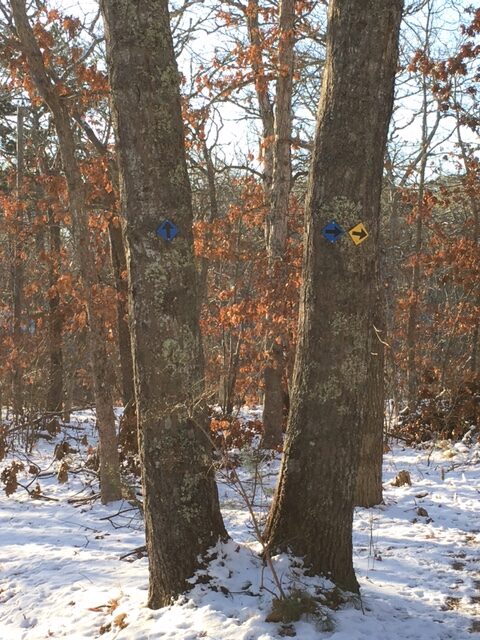This month for our fundraising analytics feature, Data Insight Team Leader (and aspiring playwright!) Steve Grimes brings three real-life fundraising conundrums to life and illustrates how data insight can bring clarity and direction to common situations our nonprofits face. ~Helen
The stories you are about to read are fictional. The analytical techniques, however, are all true.
Act 1: Survival Analysis
[Amari, prospect research manager, knocks on data analyst Hollis’ office door]
Hollis: Come in!
Amari: Hollis, you got a moment?
Hollis: Sure, what’s up?
Amari: I’m worried about our donor retention rate. I’ve had to reduce the gift officers’ portfolios by 20% this quarter because of non-response from their outreach efforts.
Hollis: Oof! Ok, any thoughts on how to fix that, I kinda like my job.
Amari: Sort of. I’m thinking of setting up an alert system to warn us when a donor is in danger of being non-responsive, but I need a straightforward indicator that I can communicate to the gift officers to keep an eye on. I don’t want to overwhelm them with too much information.
Hollis: So, like, a number we can use as a threshold so when a prospect falls under it we can flag them for being in danger of non-response?
Amari: Yup, pretty much!!
Hollis: Well, Amari, I think I have something for you. [Hollis points to their computer] Welcome to the Wonderful World of Survival Analysis!
Amari: Sounds intriguing!
Hollis: Well, it’s actually pretty morbid because survival analysis is usually used in medical research, to…well, understand how effective a particular medical treatment is..
Amari: That does sound morbid.
Hollis: In our case, it will be wonderful! So survival analysis visualizes a curve that shows how long a population of individuals ‘survive’ after treatment. From there we can use it to identify how long it takes for our donors to be in danger of moving into non-response. ‘Treatment’, our starting point, would be the first time they give to our organization, and we would be looking for the point when the majority of our donors stop donating regularly.
Amari: Ah, I think I get it. If we know what our retention rates are, identify at what point our donors stop giving regularly or in this case ‘survive’ within our organization, then those two metrics combined could be used as a threshold indicator to alert the gift officers for special action to retain the donors and hopefully improve our retention rate?
Hollis: Indubitably!
Amari: Indubitably?
Hollis: It was my word of the day.
Amari: Well, what do you need to get started?
Hollis: Data that describes how long each of our donors have been with us and their giving history.
Amari: Lovely! Ok, next problem, what are you having for lunch, I’m spoiled for options.
Hollis: I heard marketing had catering for a meeting, want to see if there is anything left?
Amari: You’re just solving all the problems today.
Hollis: I wear many hats, Amari!
[Hollis joins a Zoom meeting with Amari and Lin, Chief Gift Officer]
Lin: So then I says to Mabel, I says…oh hey, Hollis! Thanks for joining us!
Hollis: Not a problem!
Amari: Hollis, now that our retention rate is up, we want to make sure that the active prospect pool is populated with the best folks, but I feel like our Recency, Frequency, Monetary Values (RFM scores) aren’t measuring our best.
Hollis: What do you mean?
Lin: Our current RFM structure really only takes into account a person’s giving, but we have other engagement points that I don’t feel like we are tapping into.
Amari: So, like, email engagement, event attendance, and our web portal metrics?
Lin: The thing is, I’m not sure which of these engagement points we should incorporate into the RFM analysis. I’m worried we aren’t capturing individuals who are not giving a high or frequent amount, but who really like us, and I want to account for that.
Hollis: Ah, Lin, I think I have a solution! Welcome to the Wonderful World of Decision Trees!
Lin: I’m listening.
Amari: Is it as morbid as survival analysis?
Lin: Survival analysis?
Hollis: That was in the last scene, and no. But decision trees are just as useful to solve this problem.
Lin: Go on.
Hollis: Well, putting aside how we define ‘best’ and ‘engagement’ for the moment, and assuming that we want to capture as many people as possible who like us – not just the frequent donors – decision trees can help us in identifying which engagement points are the most appropriate to add into a RFM model for our purposes.
Lin: But it’s key that we have engagement points in the RFM model that takes into account as many people in our database, not just a small population of individuals.
Hollis: And that’s why I think decision trees are perfect. If you’ve ever seen a family tree, the output of decision trees sort of looks like that. What we would do is put all our recorded engagement points into a decision tree model, and the subsequent output of that analysis provides a roadmap of sorts of what engagement points are the most important, and how many people each engagement point affects.
Lin: Oh, so it is sort of a visualized way to see which engagement points are the most impactful to our prospects and how many prospects fall into that engagement point?
Hollis: Pretty much! There is some work that we would have to do to conceptualize some of these steps, but it is totally doable, and in the end we can create a more robust RFM analysis that properly ranks more of our prospect pool.
Amari: Great! When can you get started?
Hollis: As soon as I’m able to access all data points that describe how our prospects engage with our organization. From there, we would need some conversations on your definition of what the “best” prospect is for your team. It would take some iterations to get it right, but it is relatively straightforward.
Amari: Alright, I’ll get started on getting you that access.
Lin: Lifesaver, the both of you!
Hollis: Not a problem! Speaking of..[points at candy on Lin’s desk] can I have a couple of those Lifesavers next time I come into the office?
[During their weekly one-on-one, Amari and Hollis discuss the possible expansion of the organization]
Amari: You know, I’m feeling pretty good about bringing more people on board, but this is the first time in years that the organization has expanded like this, so I’m feeling a bit uneasy about the direction Development will go in the future.
Hollis: Lay it on me, what’s bothering you?
Amari: Well, I’m particularly worried about how to segment portfolios that speak to the strengths of the additional gift officers we are going to bring on the team. I would love a way to think about their portfolios that would speak to their abilities as stewards of the organization.
Hollis: Well Amari…
Amari: Here we go again…
Hollis: …I think I have a solution.
Amari: Welcome to the….?
Hollis: …Wonderful World of Cluster Analysis!
Amari: Hollis, how do you know so many worlds?
Hollis: I like wonderful things, Amari. All jokes aside, I do think cluster analysis is exactly what you need for this particular workstream.
Amari: I feel like you’re gonna explain this to me.
Hollis: Yup, you know the drill! So cluster analysis is used to identify natural groups within your data.
Amari: “Natural” groups?
Hollis: Well, calling them “unbiased groups” is a little misleading, but for all intents and purposes that is what a cluster analysis algorithm creates. In the end, what we are doing in a cluster analysis is segmenting the data based on groups that are most similar.
Amari: So we would group prospects based on how similar they are across categories?
Hollis: Well, “we” wouldn’t be doing it, the algorithm would. The power of cluster analyses is that it is unsupervised, we are essentially going where the data tells us to go.
Amari: Ahhh, I see where the “unbiased” part comes in.
Hollis: Yup, so we could find clusters of prospects that live less than 10 miles from our building, those who have given less than fifteen hundred dollars in the past year, or those who like the color blue. It really all depends on what we are tracking in our database and how we structure the datasets.
Amari: [eyes widen] And because we are letting the algorithm decide the types of groups, it might show ways of looking at prospects that we are not paying attention to?
Hollis: Spot on! This way we can identify ways of grouping prospects that are “natural” to our organization.
Amari: And knowing that beforehand might help who we recruit!
Hollis: Right, so we could do a cluster analysis on our giving data, find some groups of prospects that we feel are impactful to us, run a wealth screening on each of those groups to identify the return of investment to cultivate those prospects, and then use what we found in that analysis as a guide when doing interviews to select the right candidates for our demographic of prospects.
Amari: I think that solves some other problems we weren’t even thinking about.
Hollis: Probably, it’s nice when it works out that way.
Amari: Should I just give you unfettered access to all of our data.
Hollis: Of course. The more access we have to the org’s data, the more we can think about different ways of solving problems like this.
Amari: Can it help me with what to eat for lunch?
Hollis: I can probably figure something out, won’t know until I see what data we have. There is probably a positive correlation between eating a kale salad and how productive you are.
Amari: ….are you in the mood for salad, Hollis?
Hollis: Yeah, kinda.
Amari: Alright, my treat! Although, I’m sort of in the mood for a burger.
Hollis: There is probably a negative correlation with burgers and your productivity.
Amari: Yeah, you’re probably right, better stick to kale to be safe.




